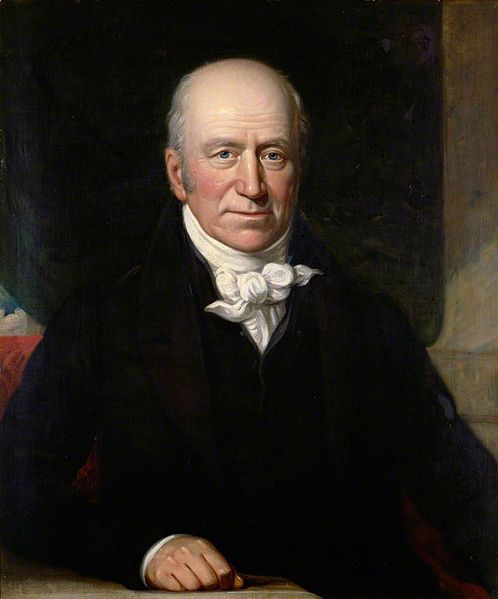
Thomas Andrew Knight (1759-1838)
On August 12, 1759, English horticulturalist and botanist Thomas Andrew Knight was born. Knight initiated the field of fruit breeding, experimental horticulture while also studying plant physiology with botanical experiments. He made studies on the movement of sap in plants, the nature of the cambium, and phototropism in tendrils. To investigate the geotropism of roots and stems, he invented a machine, rotating to simulate gravity with centrifugal force in either horizontal or vertical position.
The Life of a Horticulturist
Thomas Andrew Knight was born at Wormesley Grange, five miles north-west of Hereford in Herefordshire, the second son of Rev. Thomas Knight (1697–1764) of Wormsley Grange, Rector of Bewdley, Worcestershire, by his wife Ursula Nash. Thomas Knight studied at Balliol College, Oxford. Afterwards, Knight began studying horticulture. In 1795 he published the results of his research into the propagation of fruit trees and the diseases prevalent among them. Thomas Knight inherited land and used about 4,000 ha to perform breeding of plants including strawberries, cabbages and peas and built an extensive greenhouse. Knight published his ‘Treatise on the Culture of the Apple and Pear, and on the Manufacture of Manufacture of Cider and Perry‘. The work was quite successful and passed through several editions.
Physiological Experiments on Plants
Throughout his scientific career, Knight performed physiological experiments on plants. He elucidated the effects of gravity on seedlings and how decay in fruit trees was passed on by grafting. In many respects his work looked back to that of Rev. Stephen Hales. His goals were always strictly practical, aiming to improve useful food plants by breeding for better qualities. The Downton strawberry was the ancestor of most important modern strawberries until recent times. Similar to Gregor Mendel,[4] Thomas Knight studied variation in peas and found many of the same results as Mendel. However, he failed to make the same imaginative leap about how these changes took place. It is believed that Thomas Knight intentionally shut himself off from outside scientific influences and that he refused to read anyone else’s scientific papers until Sir Joseph Banks, with whom he had a voluminous correspondence, persuaded him to do so.
The London Horticultural Society
Thomas Knight was president of the London Horticultural Society from 1811 to 1838. There, he wrote a “prospectus” for the society, kind of like a mission statement, outlining the society’s functions and purpose. Younger members of the society were inspired by his work and scientists like Thomas Laxton carried on his principles of careful observation and practical goals. In 1805, Thomas Knight became a fellow of the Royal Society and in 1806 was awarded their prestigious Copley Medal.
David Wolfe, Gardening with a mission | John MacLeod Lecture 2017 | Royal Horticultural Society, [6]
References and Further Reading:
- [1] Thomas Andrew Knight at the University of Ohio
- [2] Thomas Andrew Knight at Britannica Online
- [3] Thomas Andrew Knight and the Founding of the Royal Horticultural Society
- [4] Gregor Mendel and the Rules of Inheritance, SciHi Blog
- [5] Thomas Andrew Knight at Wikidata
- [6] David Wolfe, Gardening with a mission | John MacLeod Lecture 2017 | Royal Horticultural Society, RHS – Royal Horticultural Society @ youtube
- [7] Rines, George Edwin, ed. (1920). . Encyclopedia Americana.
- [8] Gilman, D. C.; Peck, H. T.; Colby, F. M., eds. (1905). . New International Encyclopedia (1st ed.). New York: Dodd, Mead.
- [9] “Knight, Thomas Andrew, Esq. F.R.S.”. Biographical Dictionary of the Living Authors of Great Britain and Ireland. 1816. p. 192.
- [10] Timeline of famous members of the Royal Horticultural Society, via DBpedia and Wikidata





